Trumpeter and Tundra Swans
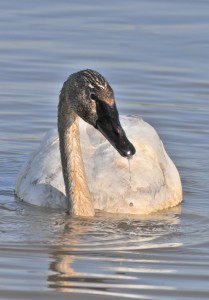
Trumpeter and Tundra Swans present a consistently underrated identification challenge in North America. Field guides and websites present a number of visual field marks, often with clear-cut illustrations or photos to show the differences — David Sibley presents a particularly good summary — but many of the differences are variable (like bill shape and color), change with the angle of viewing (like head shape), or are difficult to judge in the field (like size). Some of the best field marks, like the shape of the border between the facial feathers and the bill, may not help much in separating immature birds.
Many people think of swans as silent — ask them to imagine a swan and they will picture a species from Europe, the (somewhat) aptly-named Mute Swan, gliding serenely around a garden pond. It’s easy to forget that both native North American species were named for their vocalizations: “Trumpeter” and “Whistling” (as the New World subspecies of the Tundra Swan was known before it was lumped with the “Bewick’s” Swans of Siberia). As those very different appellations suggest, the two species sound quite distinct, and voice can be a good way to identify them.
At the same time, swans are vocally quite versatile (especially Tundra). I didn’t expect so much variety when I began my research, but then I never do. Variability aside, the bottom line is that vocalizations of Trumpeter and Tundra Swans consistently differ in pitch and tone quality with almost no overlap, and should thus be an excellent way to tell the species apart in the field.
Trumpeter Swan
Trumpeters sound remarkably low-pitched and nasal compared to Tundras — their call can easily be compared to the sound of a Red-breasted Nuthatch or (believe it or not) an Ivory-billed Woodpecker call — with many authors drawing comparisions to tin trumpets and taxi horns. The length and pattern of Trumpeter vocalizations is quite variable, and occasionally they can sound noisy (like in the last two calls on this recording). Typically, however, they sound much like this:
Note that on Tayler’s recording above, several of the calls include voice breaks, which are characteristic of large birds like waterfowl, hawks, and gulls, but would never be heard from the likes of a Red-breasted Nuthatch. The voice breaks contribute strongly to the tendency to describe these sounds as “trumpeting” or “bugling,” since voice breaks in bird sounds follow the same basic principle as changes between notes on a bugle (see this page for more information). Often, the voice breaks are lacking from Trumpeter calls.
Tundra Swan
Tundra’s voice is variable in pitch and pattern, but virtually always higher than Trumpeter, and much less nasal. Some authors compare it to the sound of Canada Goose, but in my experience the familiar honks of “Giant” Canadas are actually closer to Trumpeter calls. Tundra typically sounds much more like a Snow Goose, fairly high-pitched and rather mellow:
Tundras, however, make a wide variety of calls, including short high “barks” that remind me of something an American Coot might say:
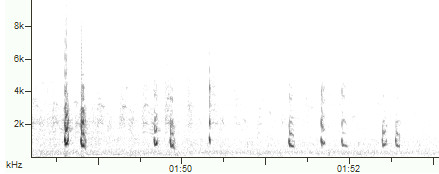
(Listen to the above sound at the Macaulay Library)
Sometimes they sound distinctly burry and strikingly reminiscent of Sandhill Crane:
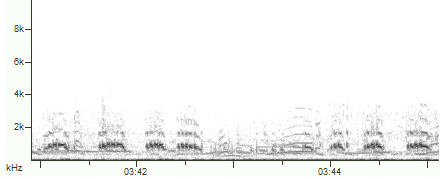
(Listen to the above starting at 3:40 on the recording)
Tundra Swans also apparently make some low moaning sounds, as attested by this recording at the Borror Library (probably a captive bird, given the location and the date):
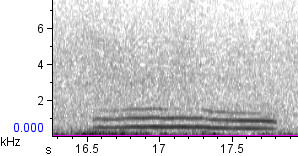
(Listen to the above recording at the Borror Lab)
But the only sound I’ve found that might cause identification confusion is this occasional low-pitched, rough, nasal braying:
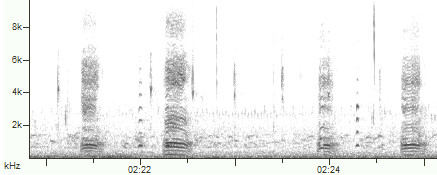
(Listen to the above at the Macaulay Library, starting about 2:20 in the recording)
Of all the Tundra Swan vocalizations I’ve heard, this one sounds the most like a Trumpeter Swan. However, it may be given primarily on the Arctic breeding grounds, and usually appears interspersed with higher-pitched, more typical Tundra calls, so hopefully it shouldn’t cause too much confusion in the field.
For an excellent introduction to the variety of Tundra Swan calls, check out this recording by Gerrit Vyn of winter flocks approaching an evening roost in North Carolina. It’s nearly 50 minutes long, but it really gives a good sense of what you can expect Tundras to sound like in the field. (Note that some of the higher, hoarser calls on the recording may come from juveniles — but I don’t know enough about juvenile calls to say so with certainty. As always, there remains more to learn!)